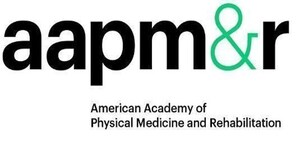Consensus Guidance Statements on Diagnosing and Treating Long COVID Symptoms of Breathing Discomfort and Cognitive Symptoms Released by the American Academy of Physical Medicine and Rehabilitation
ROSEMONT, Ill., Dec. 14, 2021 /PRNewswire/ -- Today the American Academy of Physical Medicine and Rehabilitation (AAPM&R) released the next two parts in a series of consensus statements with practical guidance for clinicians treating patients suffering from breathing discomfort or cognitive symptoms, two common symptoms of Post-Acute Sequelae of SARS-CoV-2 infection (PASC), or Long COVID. This is the first and only multidisciplinary collaborative consensus guidance for Long COVID symptoms.
Long COVID is a condition that occurs in individuals who have had COVID-19 and report at least one persistent symptom after acute illness. An estimated three to thirteen million Americans have symptoms of Long COVID, based on data from the Journal of the American Medical Association and AAPM&R's Long COVID Dashboard. Long COVID symptoms are varied and ongoing and include neurological challenges, cognitive symptoms such as brain fog, respiratory issues, fatigue, pain and mobility issues.
"Long COVID is a long-term public health issue," said Benjamin Abramoff, MD, MS, FAAPMR, Co-Chair of the Multidisciplinary PASC Collaborative, convened by AAPM&R to address the pressing need for guidance in caring for patients with Long COVID. "Physical medicine and rehabilitation (PM&R) physicians are uniquely qualified to help guide the multidisciplinary effort needed to develop Long COVID diagnosis and treatment guidance."
As a specialty, PM&R physicians identify the root causes of diminished function. They lead clinical, psychosocial evaluations and treatment plans to help individuals regain their quality of life. AAPM&R's PASC Collaborative published consensus guidance statements as a peer-reviewed manuscript in the PM&R Journal.
The severity of Long COVID respiratory issues appear to be associated with the patient's acute COVID-19 illness. Shortness of breath and breathing discomfort may affect Long COVID patients with an initial mild case of COVID-19. Of note, breathing discomfort can be misdiagnosed in some groups. Patients with darker skin pigmentation may have inconclusive pulse oximetry readings, and clinicians should consider additional workup for lung disease and pulmonology referral. While pregnant people may experience shortness of breath due to pregnancy, pregnant Long COVID patients should be given prompt evaluation if experiencing new shortness of breath.
Cognitive symptoms can range from "brain fog" to difficulty completing daily activities or loss of concentration. Women may experience cognitive symptoms with Long COVID more frequently than men.
"New research shows that patients with strong interpersonal support systems and good sleep hygiene respond better to Long COVID therapies, and these activities are especially important in rehabilitation for cognitive symptoms," Monica Verduzco-Gutierrez, MD, FAAPMR, co-author of the breathing discomfort and cognitive symptoms guidance statements said. "We must make sure that rehabilitation for all patients with Long COVID symptoms is individually tailored and moves at the patient's own pace rather than a set timetable."
Rehabilitation for Long COVID cognitive symptoms follows established techniques used for patients with concussion or traumatic brain injury. Programs to rehabilitate breathing issues may include progressive exercise two to three times a week for two to three months, guided breathing therapy, oxygen management, energy conservation and pacing, medication management, nutritional guidance, emotional support and education. Inhaled therapies and oral glucocorticoids used to treat chronic breathing issues like asthma, do not commonly improve symptoms or pulmonary function and may be accompanied by side effects.
The Collaborative released its first consensus guidance on fatigue in August. Additional consensus guidance statements on cardiovascular complications, autonomic disorders, mental health, pediatrics and neurology will be published on a rolling basis.
Since the beginning of 2021, AAPM&R has undertaken comprehensive efforts to support its call for a national plan to address PASC and the millions of Americans it affects. Learn more about the consensus guidance methodology, the Long COVID Dashboard and AAPM&R's Long COVID Call to Action.
The American Academy of Physical Medicine and Rehabilitation is the national medical specialty organization representing more than 10,000 physicians specializing in physical medicine and rehabilitation. PM&R physicians, also known as physiatrists, treat a wide variety of medical conditions affecting the brain, spinal cord, nerves, bones, joints, ligaments, muscles and tendons. PM&R physicians evaluate and treat injuries, illnesses and disability and are experts in designing comprehensive, patient-centered treatment plans. Physiatrists utilize cutting-edge as well as time-tested treatments to maximize function and quality of life.
SOURCE American Academy of Physical Medicine and Rehabilitation

Related Links
WANT YOUR COMPANY'S NEWS FEATURED ON PRNEWSWIRE.COM?
Newsrooms &
Influencers
Digital Media
Outlets
Journalists
Opted In





Share this article